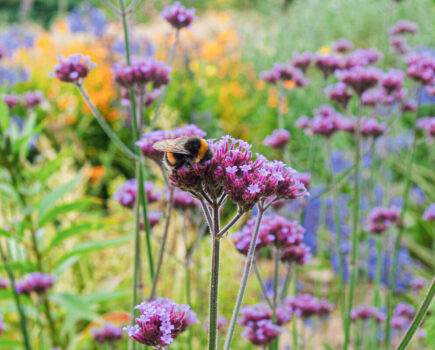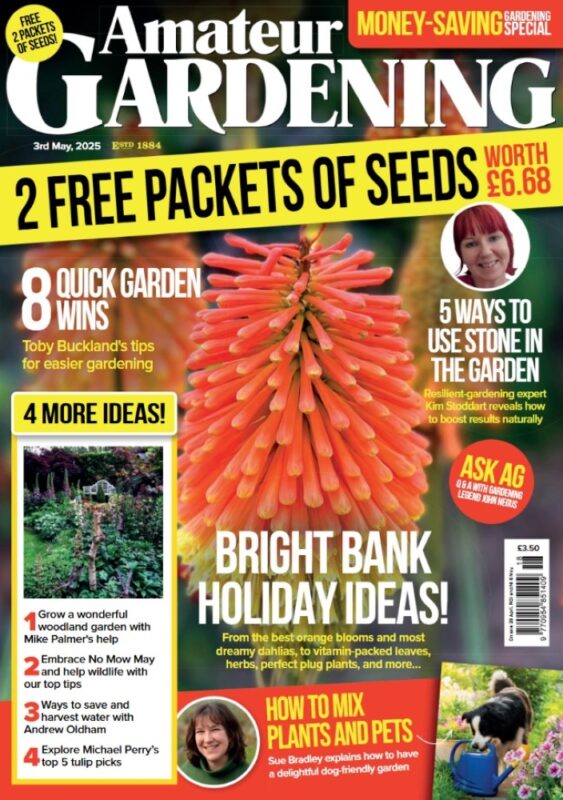Bob explains why we should all try and make more space for trees in gardens of every size
Now’s a really good time for planting trees and shrubs, the soil’s still relatively warm and they soon get their roots down. I sometimes reckon we don’t plant enough different trees in our gardens, perhaps folk are afraid they’ll get too big and take over. Not to worry- that’s more rambler roses, kiwis and almost every ‘creeper’. There’s no problem with most fruit trees, almost all now come on special rootstocks limiting their growth in a range of smaller sizes.

The smallest of course take up less space but cannot carry much of a crop. Yet, to look at it another way, this means you can have several varieties instead of one larger tree. This makes sense in lots of ways, not least of all that it’s often a bit of an obligation to eat a huge harvest of just one kind. Variety is more interesting and digestible.
How to grow smaller trees
One of the best forms are cordons, single branches on weak roots, trained along fences or walls, slanted at an angle so they’re longer for the same height. Each can produce a tray or so of fruits, pruning is straightforward and handily done without needing steps. A row of cordons is superb for a collection of apples and pears, and their framework’s attractive even during winter when they are out of leaf.
Managing bigger trees
True, many native and ornamental trees can become too large for most gardens given time, even when grown on single trunks. However if they are regularly coppiced every year or so, from early on, most become compact multi-stemmed bushes. Coppicing just means cutting back down to near ground level. If done regularly then these stems are easily maintained with loppers and you use the cut stems to create useful wildlife shelters.
One cannot easily cope with a mature oak, grey willow, birch, ash and so on in any but the larger garden, yet these are also feasible varieties to grow if coppiced. As their immense wildlife value comes mostly from the hundreds of different critters eating the trees’ foliage, then your coppicing, which encourages fresh shoots in abundance, creates trees almost as useful for biodiversity as those which are full size.
Smaller native trees

Some such as hawthorn, rowan and hazel are much more compact anyway. One overlooked gem is elderberry; which is easy to propagate right now, with pieces of stem just pushed into the ground, which will probably root. They require regular water, which in this weather isn’t a problem, and you’re near sure of success.
Elderberry is a wonderful tree, producing flowers for fritters and ‘champagne’, berries for jelly, and masses of shoots for compost. A few elderberry trees provide wheelbarrow loads of material, which work really well when it comes to helping to bulk up a compost heap. Another advantage is this versatile tree can be grown in difficult places, such as within hedges, scrub, nettle and briar patches, almost any spare corner.
Another tree well worth planting is our European native Cornus mas, the Cornelian Cherry. It’s early to flower with a host of tiny primrose yellow blooms followed by edible fruits. These fruits are oval, gorgeously-coloured, translucent ruby. Incredibly sour until fully ripe when they become sweet and really tasty. Though their stones are annoying they are excellent for snacking, and the cooked fruits can be sieved to make the most delicious tart jelly.
Find more tips, advice and articles like this at the Amateur Gardening website. Subscribe to Amateur Gardening magazine now





